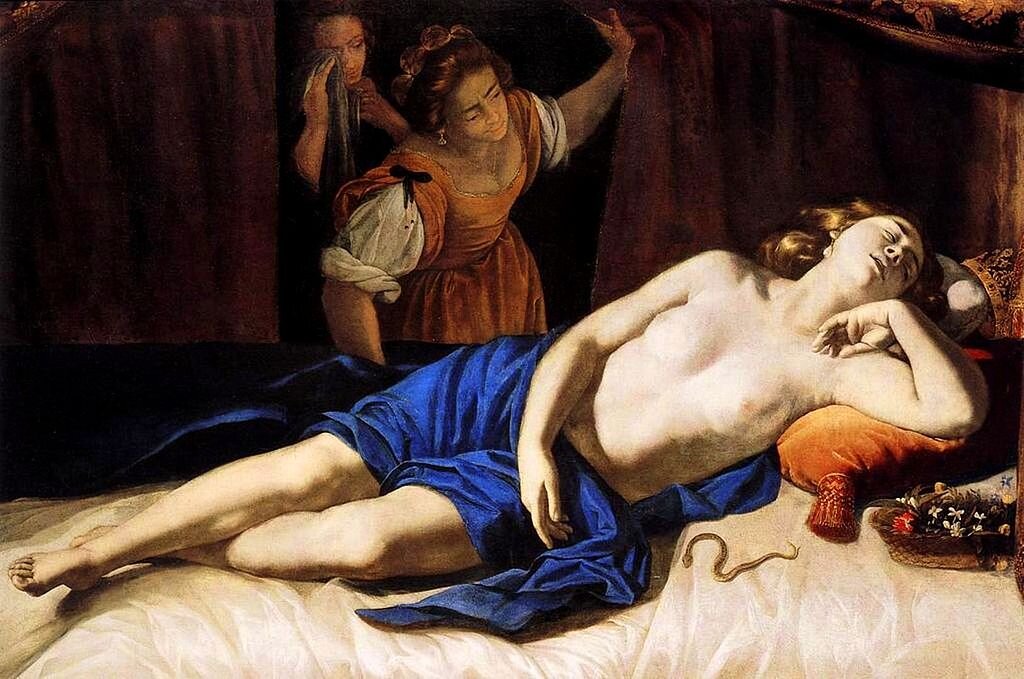
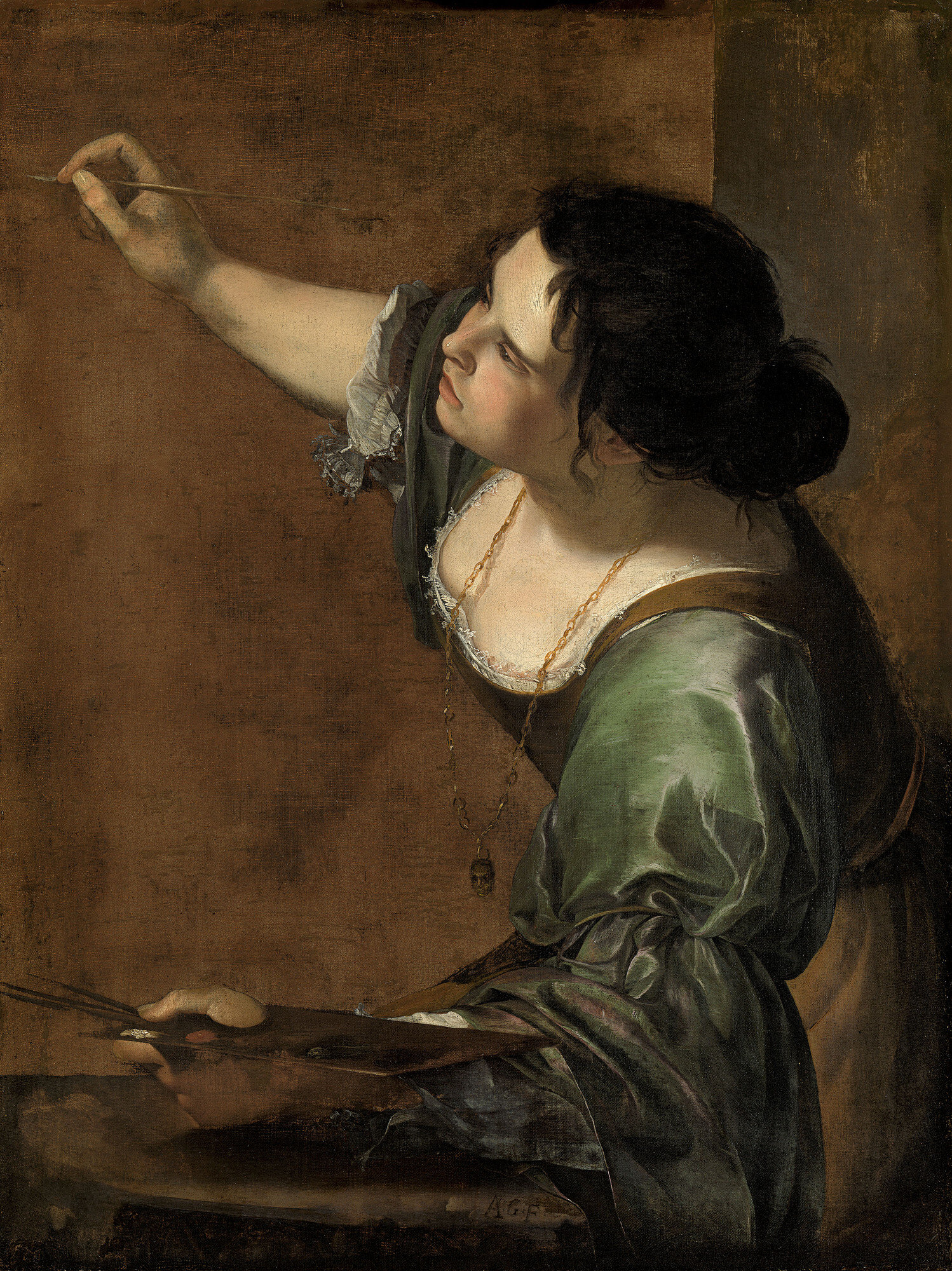
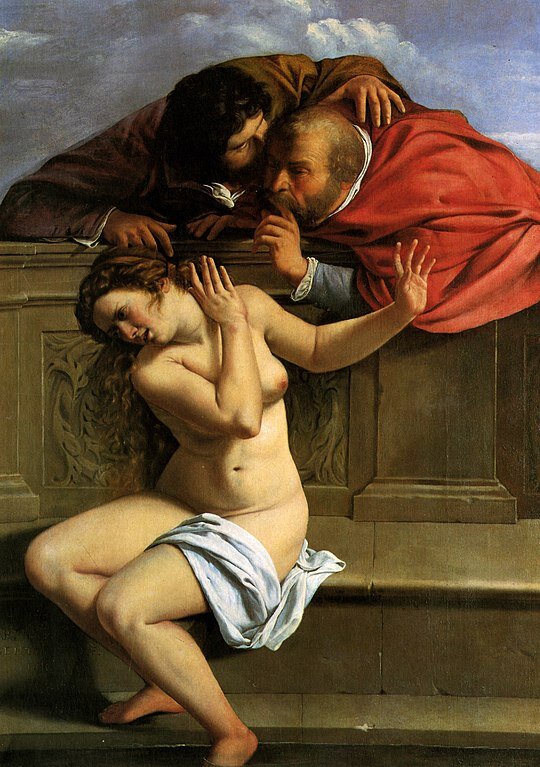
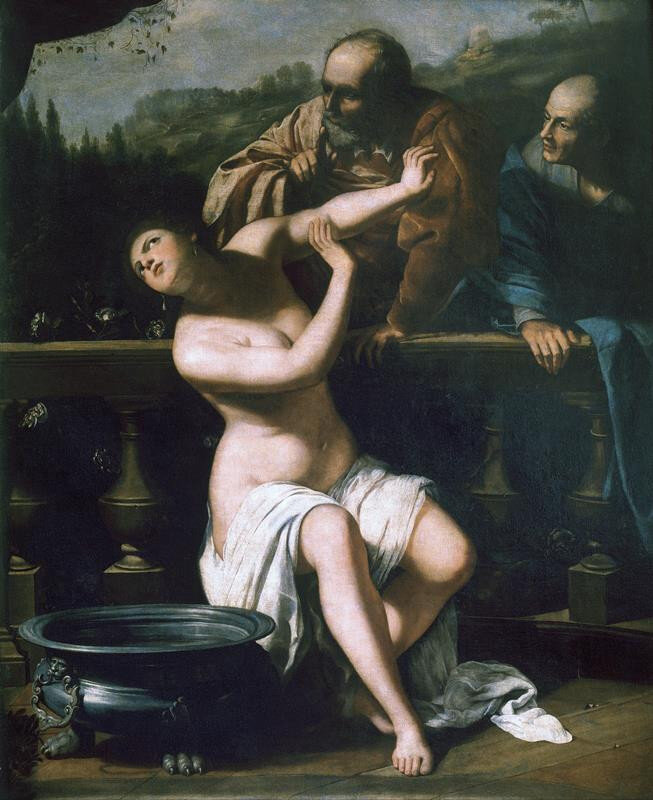
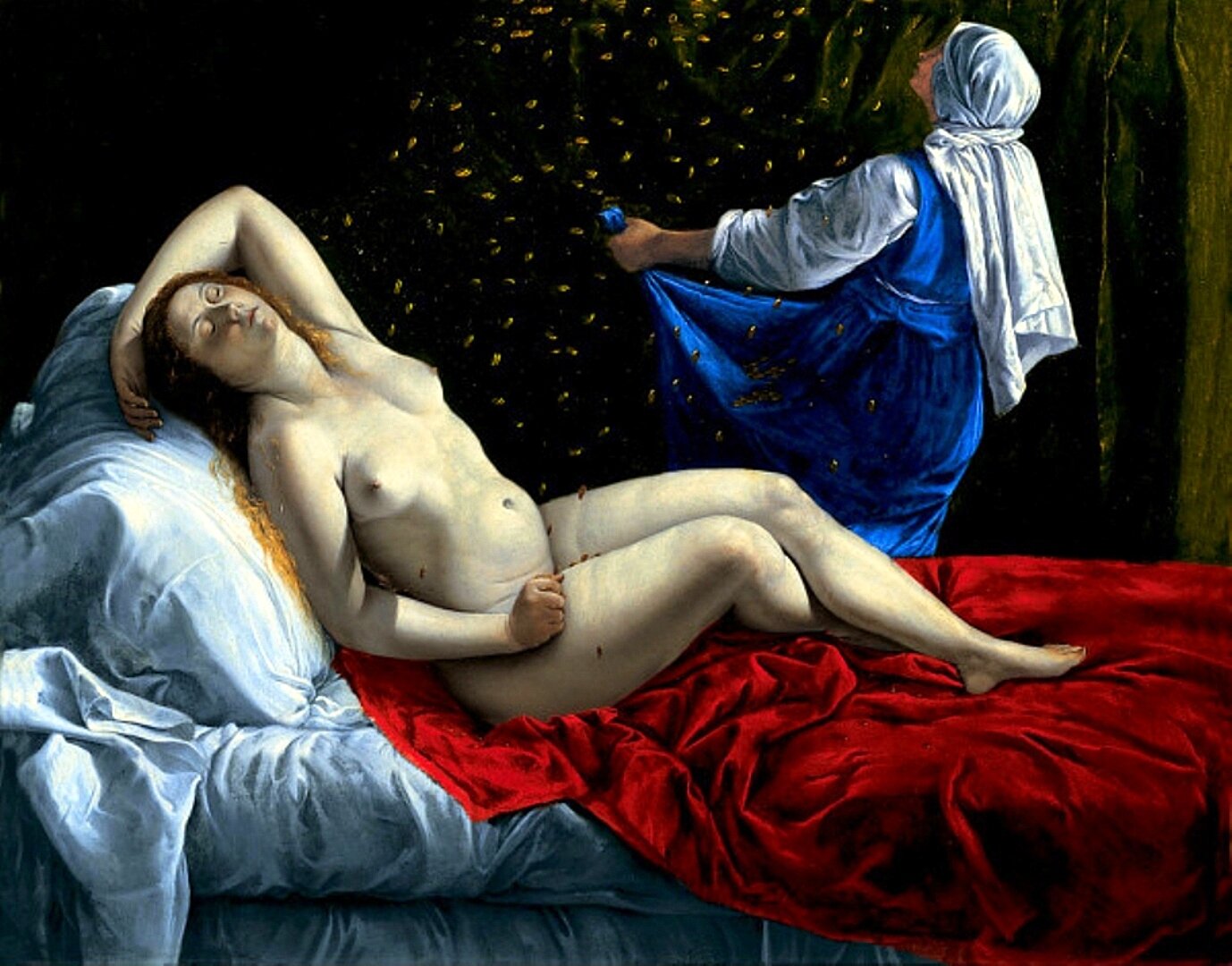
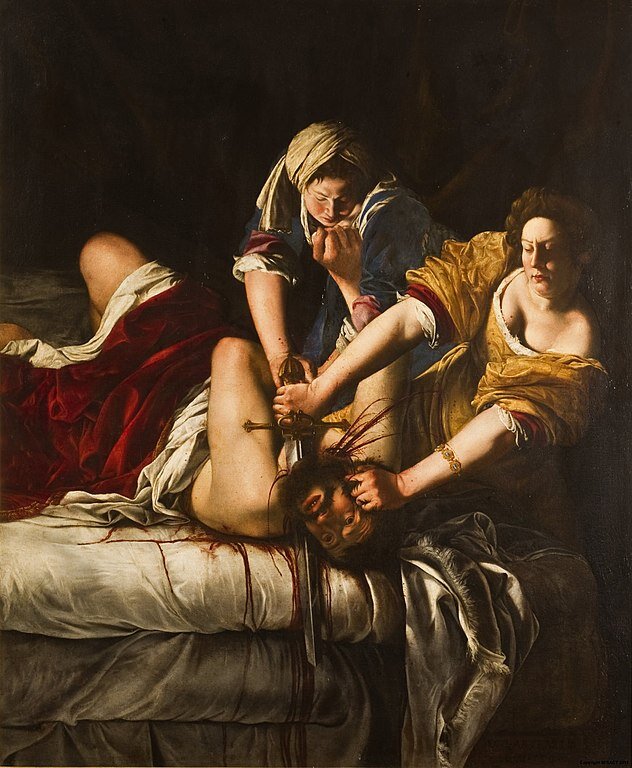
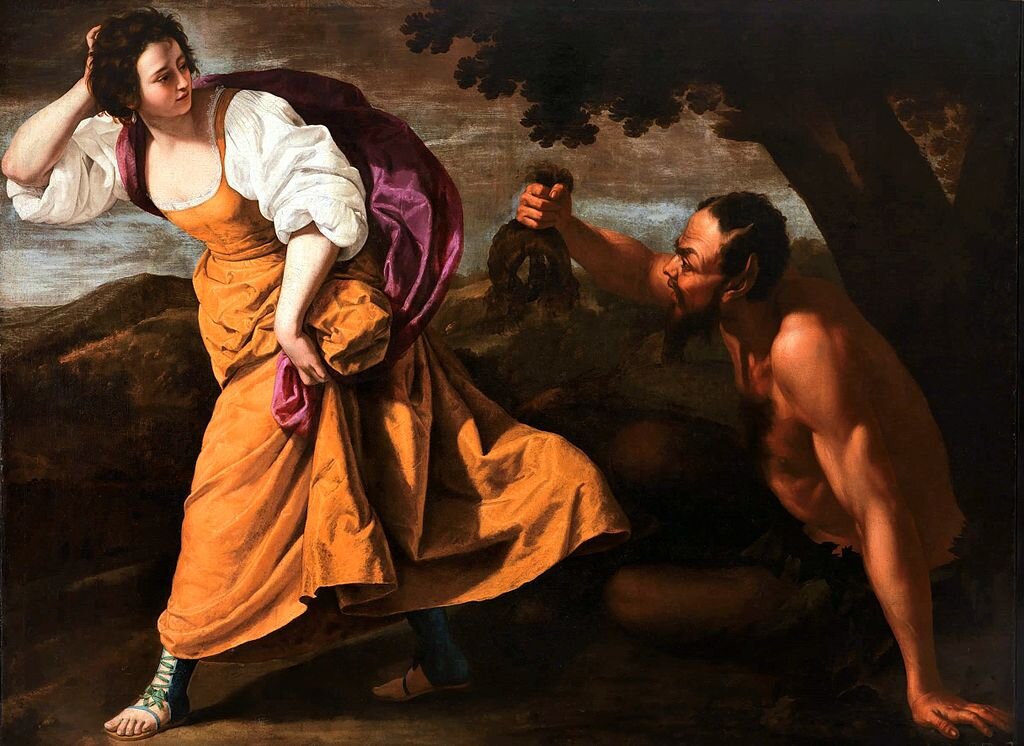
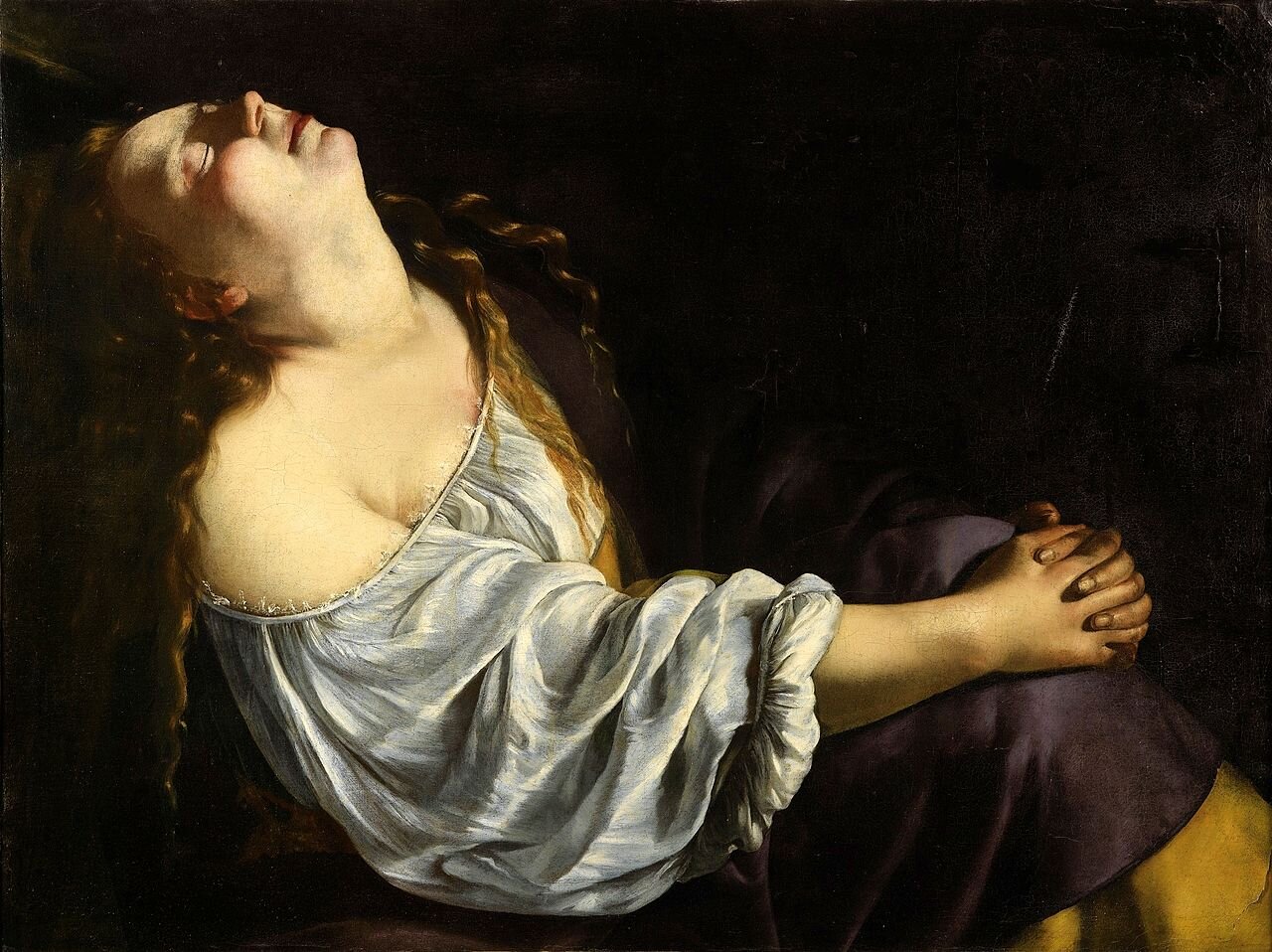
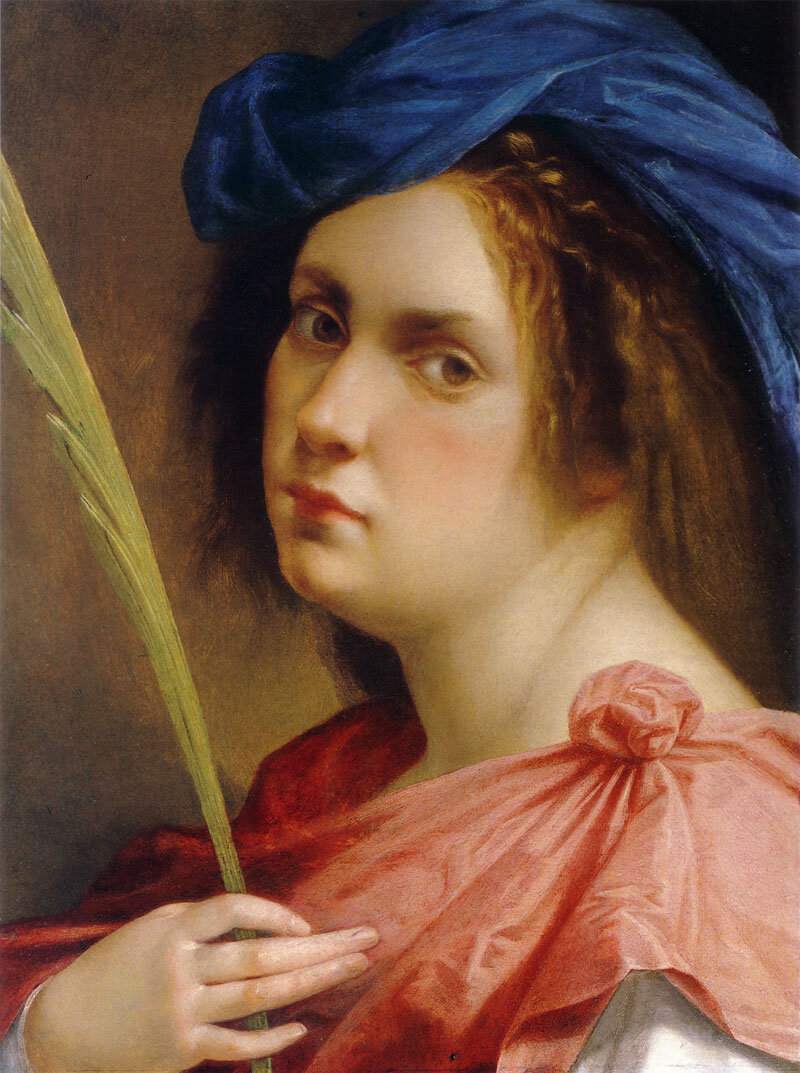
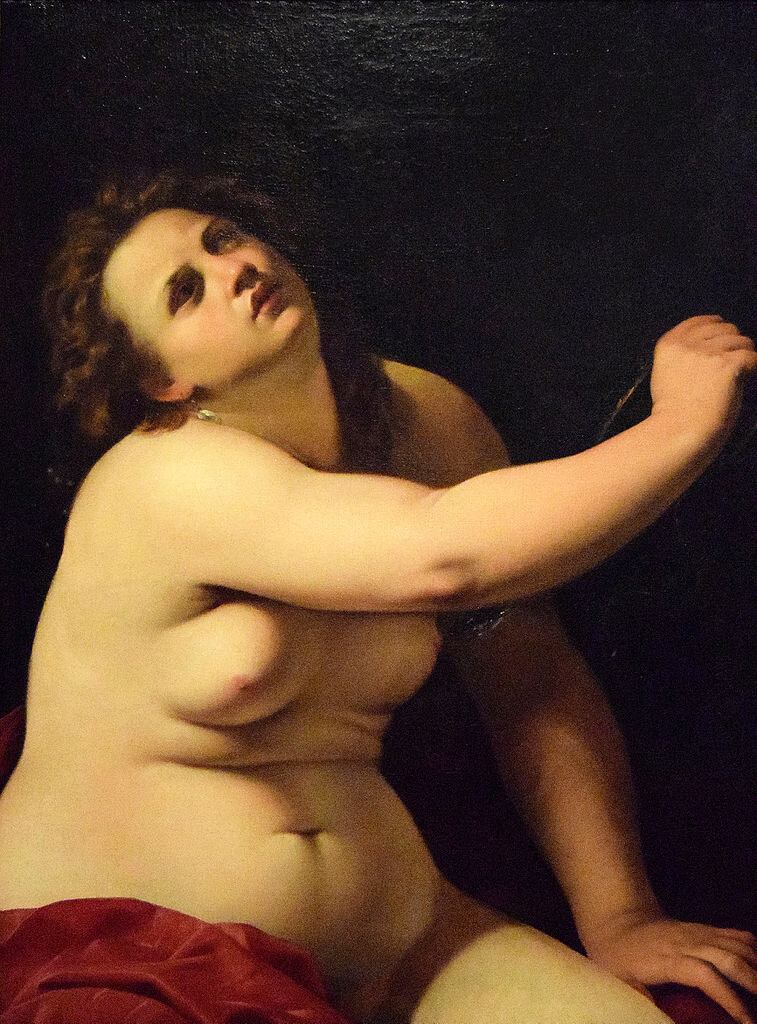
![Minerva (Sapienza) [Minerva (Wisdom)]](https://images.squarespace-cdn.com/content/v1/5509aaade4b014805939e79c/1584378894313-PI86A6OFRWDGP8YEKSYT/Artemisia_Gentileschi_-_Minerva_-_WGA8568.jpg)
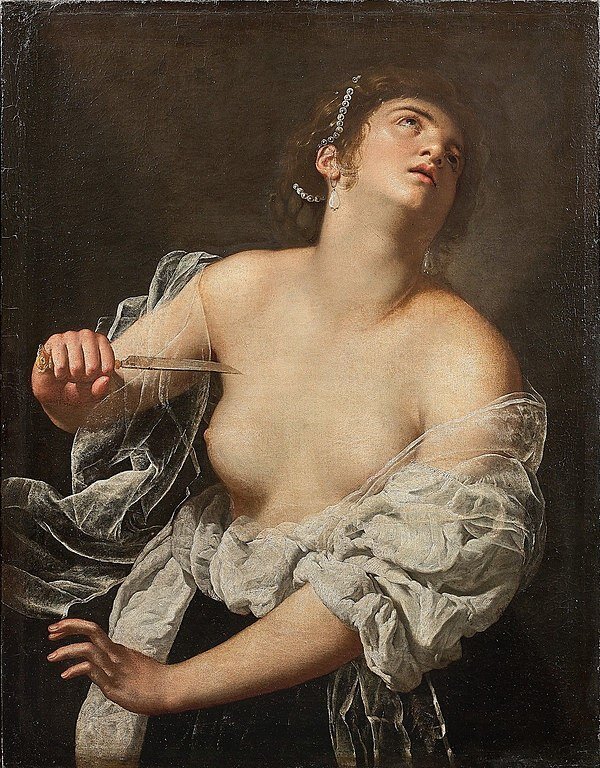
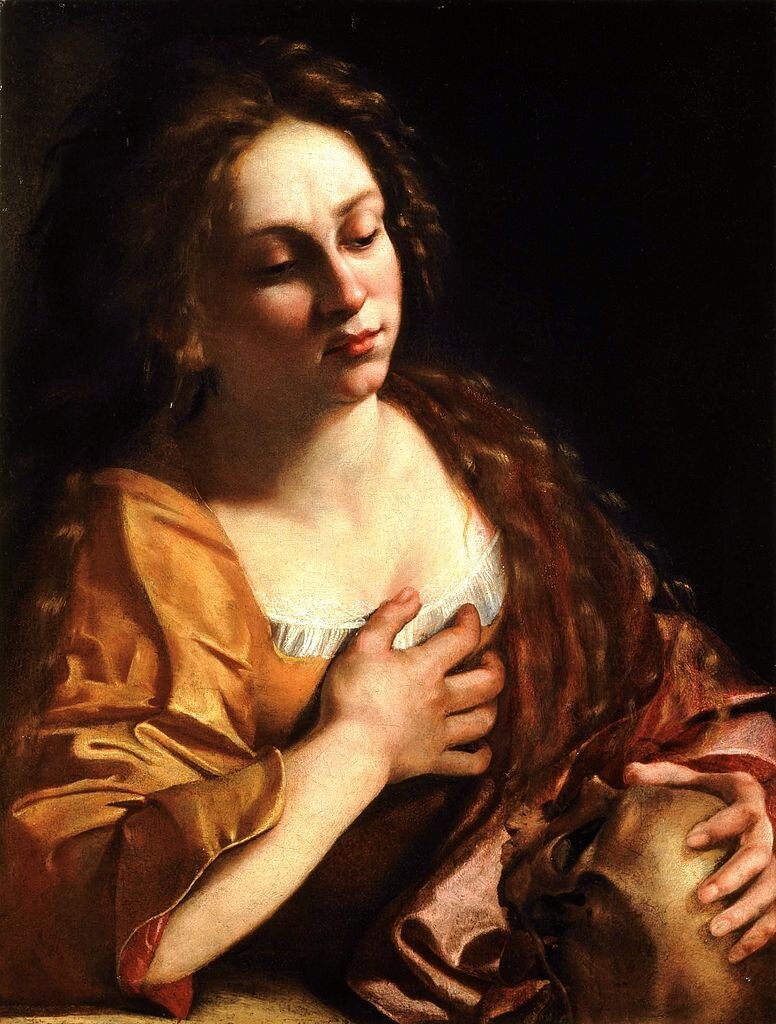
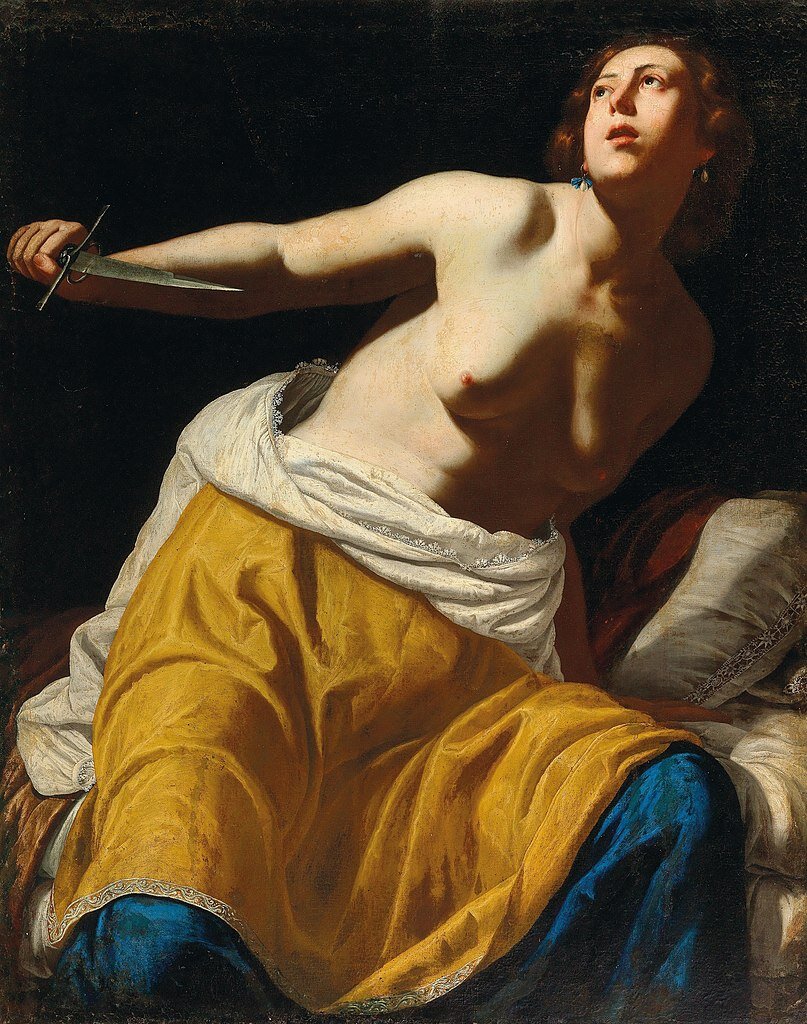
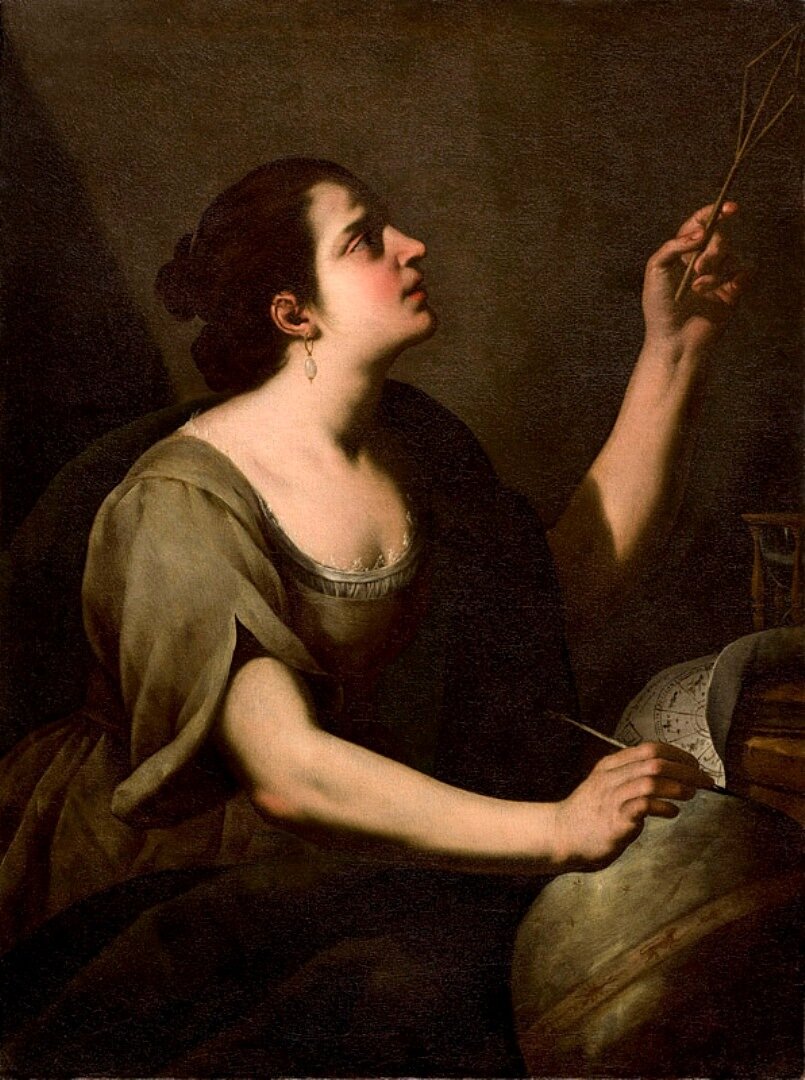
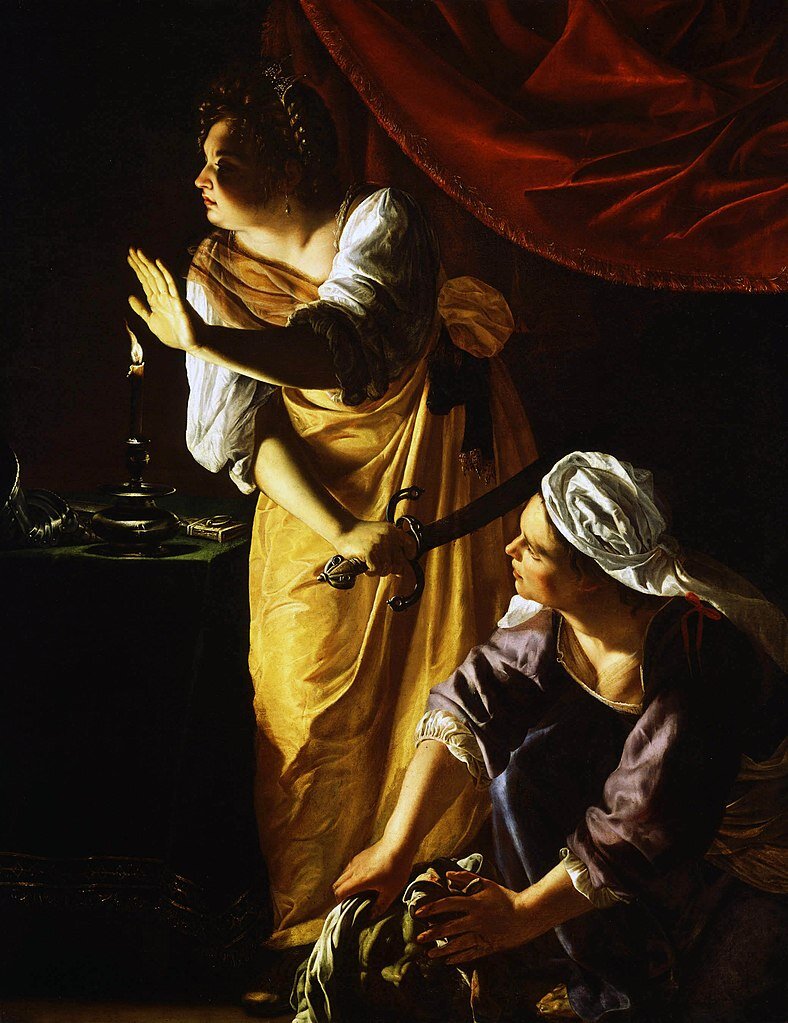
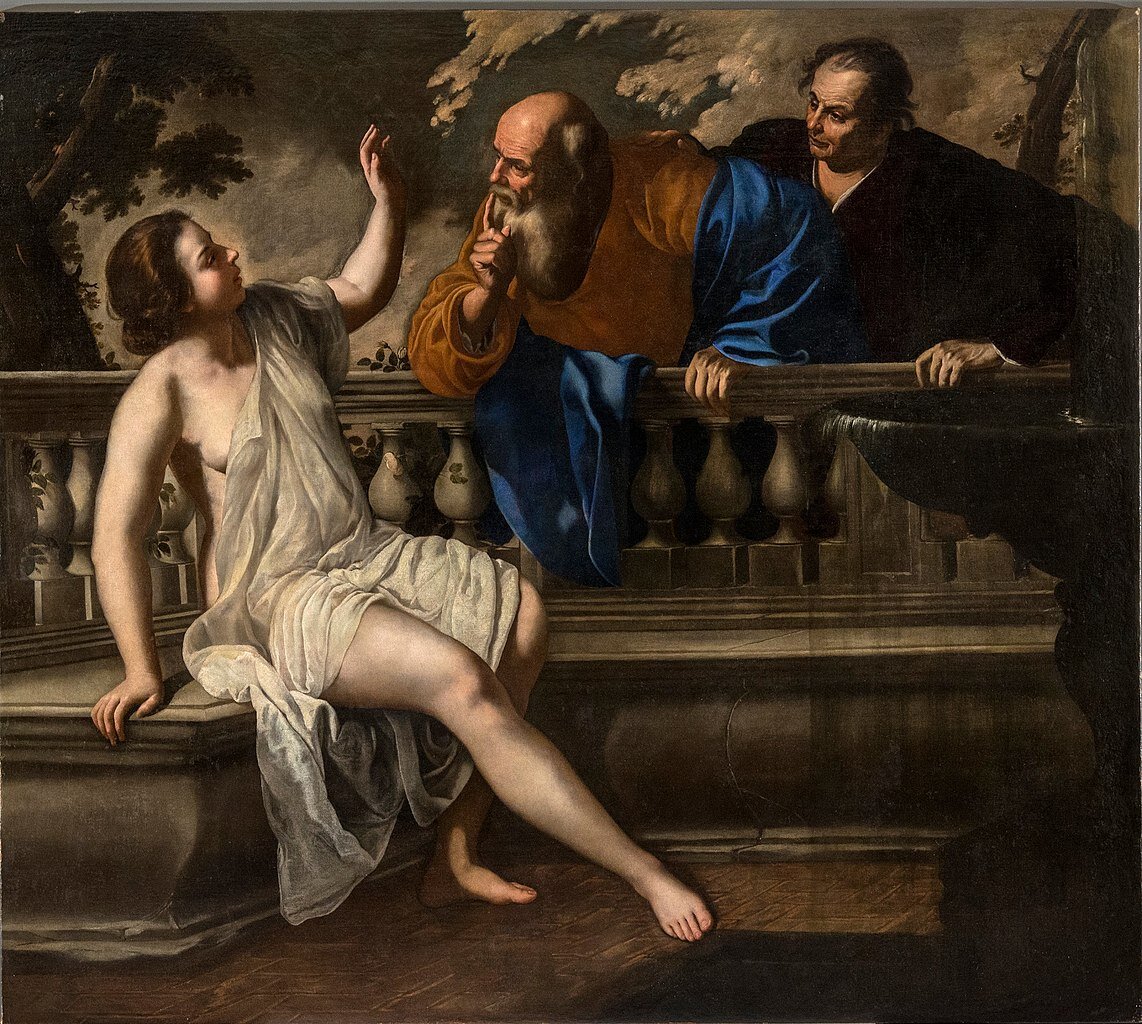
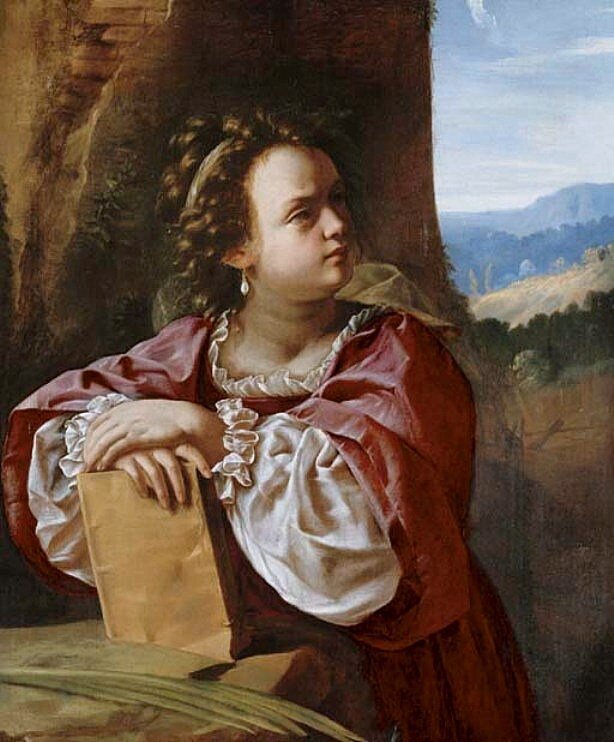
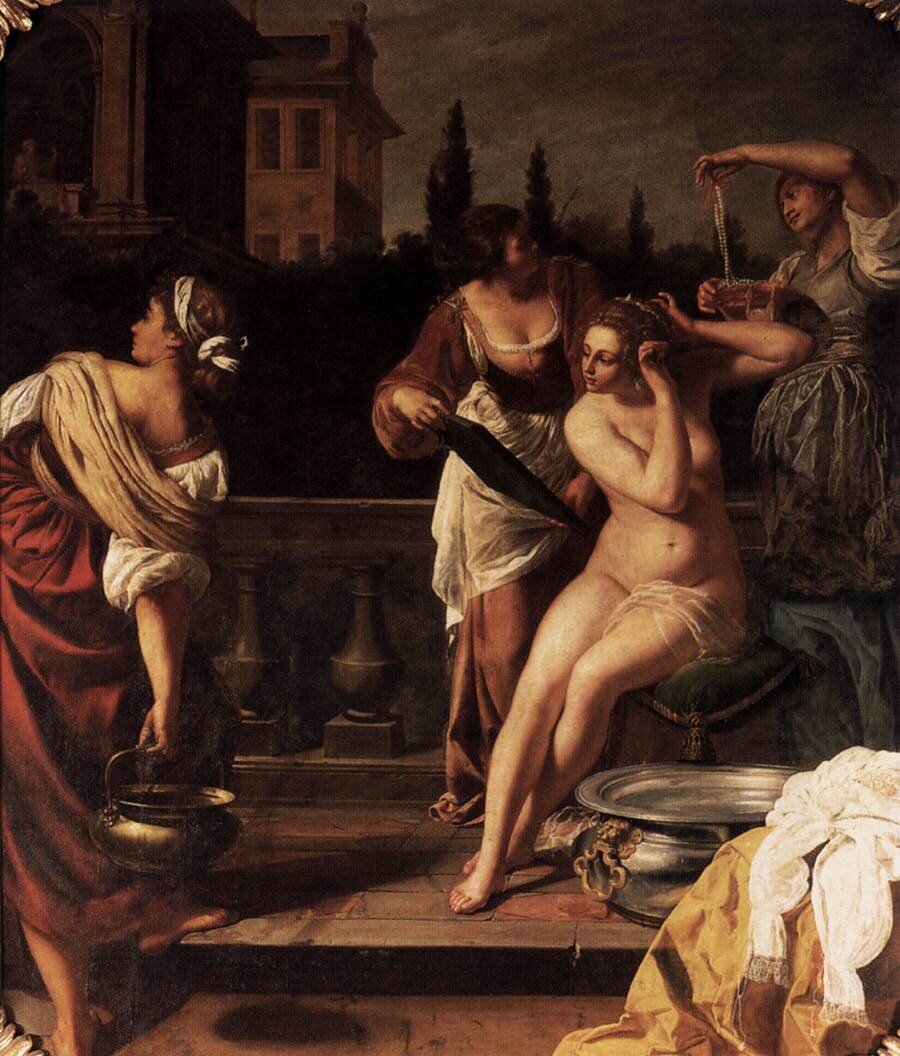
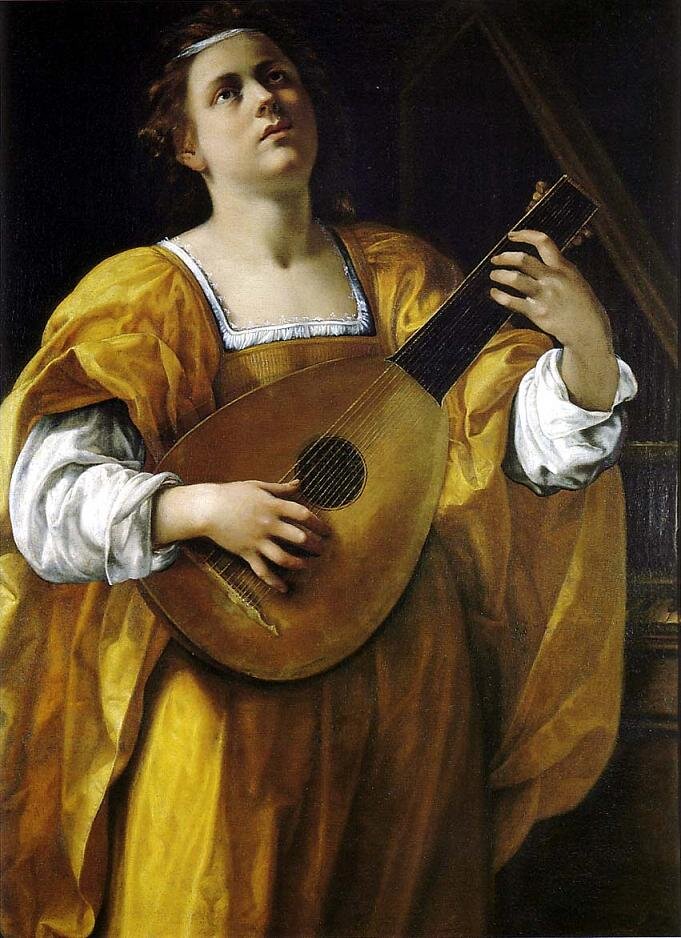
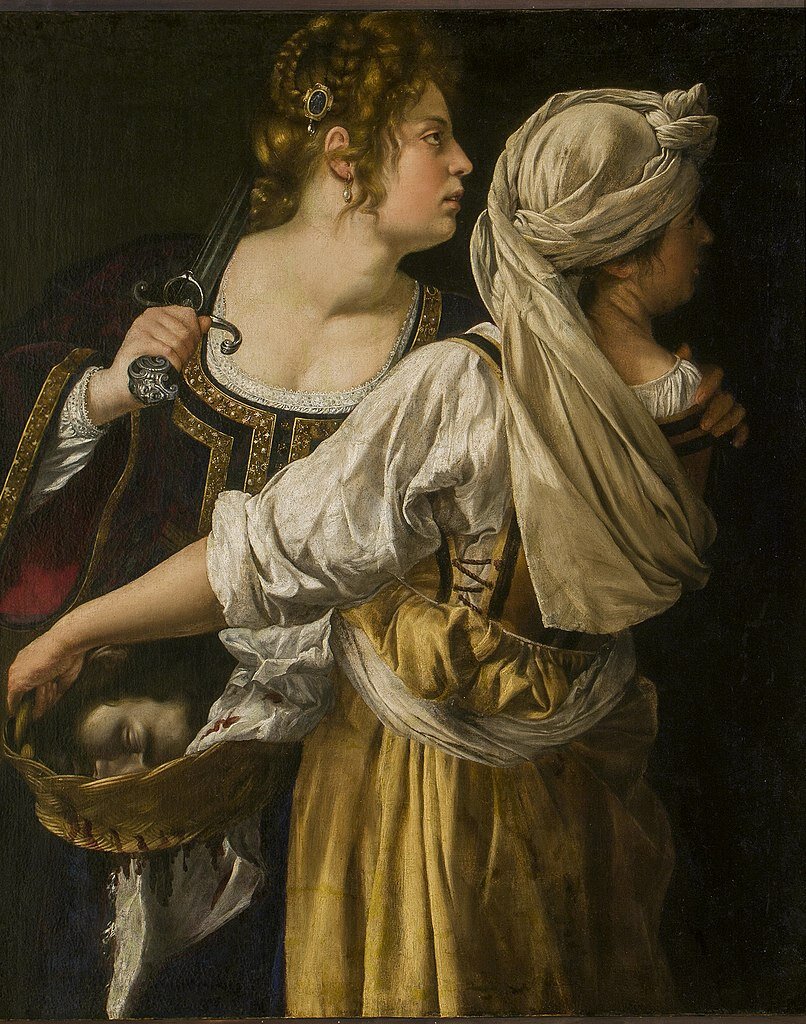
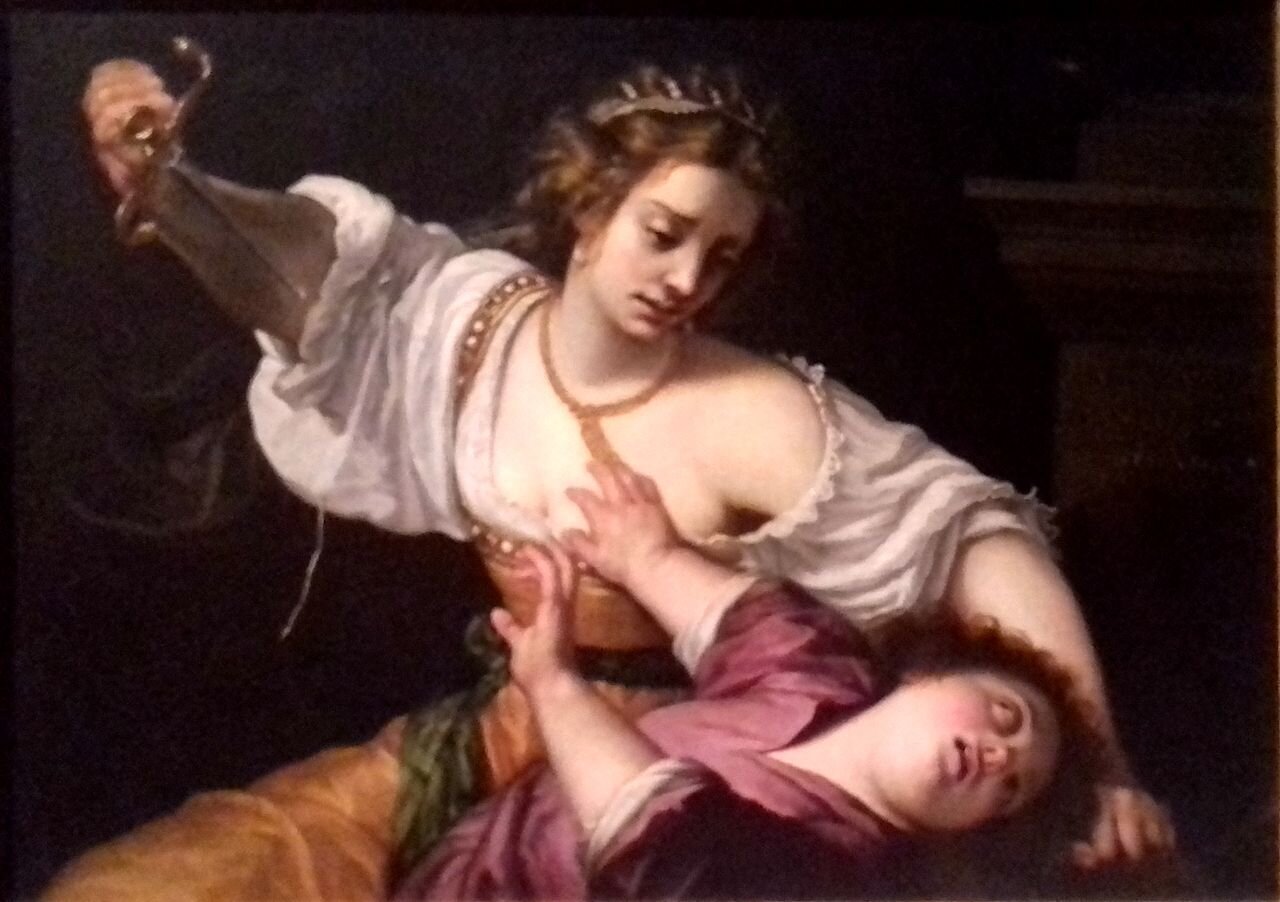
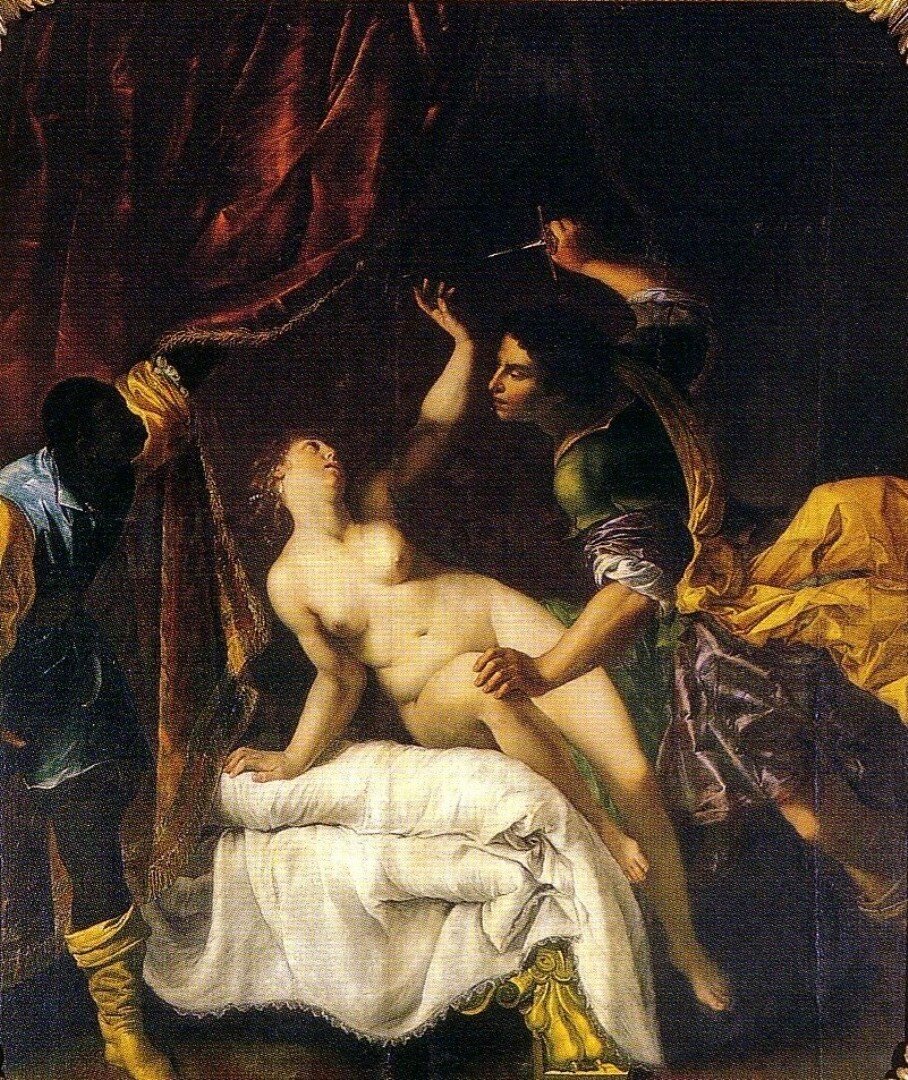

Artemisia Gentileschi, 1633-35, Private Collection, Rome, Italy
“In this painting, Gentileschi presents a complicated vision of female power and powerlessness. She shows Cleopatra's self-inflicted and solitary death brought about by her mistreatment by men. In some ways this can be seen as an example of female agency in that she made the personal choice to respond in this manner. Conversely, by not focusing on the decision itself, as in Lucretia, but on the aftermath, the painting acts as a strong symbol of the lack of recourse that women had available to them and the impact that this had on those around them, in this instance the female attendants at the back of the painting.
Gentileschi, however, also uses some tropes typical of male painters of the period to present Cleopatra's semi-nude body to the viewer. In this as in other similar works, Gentileschi portrays nude women in sleep or in death, placing the viewer in the position of voyeur. In their book about Orazio and Artemisia Gentileschi, Keith Christiansen and Judith W. Mann argue that in such images Artemisia sometimes played to the demands of the art market in presenting some of her female heroes: "The representation of a slumbering female raises questions about reading Artemisia's imagery in terms of forceful heroines with whom Artemisia could identify. While she has minimized some of the patently sexual references used by other artists, she has presented a vulnerable female, unaware of the viewer's gaze, who becomes an inadvertent object of male desire, evidence of Artemisia's willingness to respond to the requests of male patrons". —The Art Story

Artemisia Gentileschi, 1638-39, Royal Collection UK
“Gentileschi follows the standard iconography for the allegory of painting. This is described in Cesare Ripa's Iconologia, the key iconographical handbook of the period, as "a beautiful woman, with full black hair, dishevelled, and twisted in various ways, with arched eyebrows that show imaginative thought, the mouth covered with a cloth tied behind her ears, with a chain of gold at her throat from which hangs a mask, and has written in front 'imitation'". The gag, intended to indicate that painting is silent, however, is notably absent from this depiction. Through this omission, Gentileschi suggests both a painting's ability to speak volumes and her own refusal to be silenced as a woman and as an artist. References in her personal correspondence note that Gentileschi painted a number of self-portraits, although few survive and it is likely that these were in demand from collectors who were attracted by her ability as an artist and her unusual status as successful female painter.” —The Art Story

Artemisia Gentileschi, 1593-, Schloss Weißenstein, Germany
“Susanna's response is at the center of the painting, demonstrating Gentileschi's unprecedented psychological realism, particularly in her presentation of women. Feminist art historian Mary Garrard argues that "Artemisia's Susanna presents us with an image rare in art, of a three-dimensional female character who is heroic". She goes on to explain that "the expressive core of Gentileschi's painting is the heroine's plight, not the villains' anticipated pleasure," and this offers an entirely different set of concerns to many of her male counterparts. Gentileschi painted this image prior to her rape by Tassi and the subject matter may reflect sexual harassment that she was receiving at his and other artists' hands once she began training at his studio.” — The Art Story

Artemisia Gentileschi, Saint Louis Art Museum
“The Greek myth of Danae tells the story of a young woman confined to her bedchamber by her father, King Acrisius of Argos. It was a ploy to prevent her getting pregnant as an oracle had predicted that she would bear a son who would cause Argos’ death. The King of the Gods, Zeus, transformed himself into a shower of gold and succeeded in impregnating her in this form and it is this moment that Gentileschi depicts here. The son Danae bore was Perseus who later fulfilled the prophecy.
Danae was a traditional subject for paintings and had previously been depicted by artists including Titian and Tintoretto. Representations were either of Danae as pure and chaste or promiscuous and greedy, eagerly accepting the gold. In the work, Gentileschi references some of the these tropes, including the servant in the background catching the gold, but she also subverts them. Gentileschi's Danae is neither sexually aggressive nor innocently unaware, instead she is shown in the process of experiencing the consummation. There is some debate as to the meaning of this and it has been suggested by art historians Keith Christiansen and Judith W. Mann that "the painting depicts the sexually aroused Danae". They go on to argue that "Danae's fist, the coins pushed between the clenched fingers, also becomes a metaphor for sexual embrace" and that she is shown enjoying her sexual union with Zeus. Alternatively, professor Jeanne Morgan Zarucchi has argued that this image shows sexual violence and resistance as Zeus forces himself onto Danae. This is in line with the semi-autobiographical nature of Gentileschi's early works which often reference sexual assault. — The Art Story

Artemisia Gentileschi, 1614-20, Uffizi Gallery, Florence
“In this painting, Gentileschi presents a portrait of women's power, while simultaneously asserting her own power as an artist with the capacity to choose her own subjects and make her own decisions about how to treat them. As The Guardian's senior art critic Jonathan Jones argues, "In most paintings, including Caravaggio's hallucinatory rendering, Judith has a servant who waits to collect the severed head. But Gentileschi makes the servant a strong young woman who actively participates in the killing. This does two things. It adds a savage realism that even Caravaggio never thought of - it would take two women to kill this brute. But it also gives the scene a revolutionary implication. 'What,' wonders Gentileschi, 'if women got together? Could we fight back against a world ruled by men?'" Notably, this is one of several paintings by Gentileschi that depict women taking revenge or punishing men. This can be seen as an expression of her frustration and anger after her rape and trial as a teenager and it has been suggested that Judith is a self-portrait of the artist.” — The Art Story

Artemisia Gentileschi, 1630-35, Private collection, Naples, Italy
The story of Corisca comes from Battista Guarini's Il Pastor Fido. [The Faithful Shepherd]. The satyr captures the nymph Corisca to seduce her. However, she escapes because he grasps her by the hair of her wig, pulling it free from her scalp. Woman eludes a lustful man by stripping off surface decoration and fleeing with her honor intact.
This painting was misattributed to Neapolitan artist Massimo Stanzione before Artemisia's signature was discovered at right in the early 1990s.
image: wikicommons

Artemisia Gentileschi, 1615, Private collection, New York City

Artemisia Gentileschi, c.1620, Private collection Cavallini-Sgarbi Foundation, Ferrara, Italy

Artemisia Gentileschi, 1615-16 or 1631, Private collection, Marc A. Seidner, Los Angeles, USA

Artemisia Gentileschi, 1640s, Private collection

Artemisia Gentileschi, 1623-25, Detroit Institute of Arts
Judith and her servant pause, seeming to hear a noise outside Holofernes’ tent. The shadowy interior is theatrically illuminated by a single candle. Judith’s hand shields her face from the glow, drawing attention to Holofernes’ discarded iron gauntlet. The viewer’s eye travels to the object in the maidservant’s hands: Holofernes’ severed head.

Artemisia Gentileschi, 1620, oil on canvas, 90×75 cm., Nationalmuseum, Stockholm

Artemisia Gentileschi, 1618-19, Palazzo Pitti
Judith with her maidservant holding a basket severed head of Holofernes